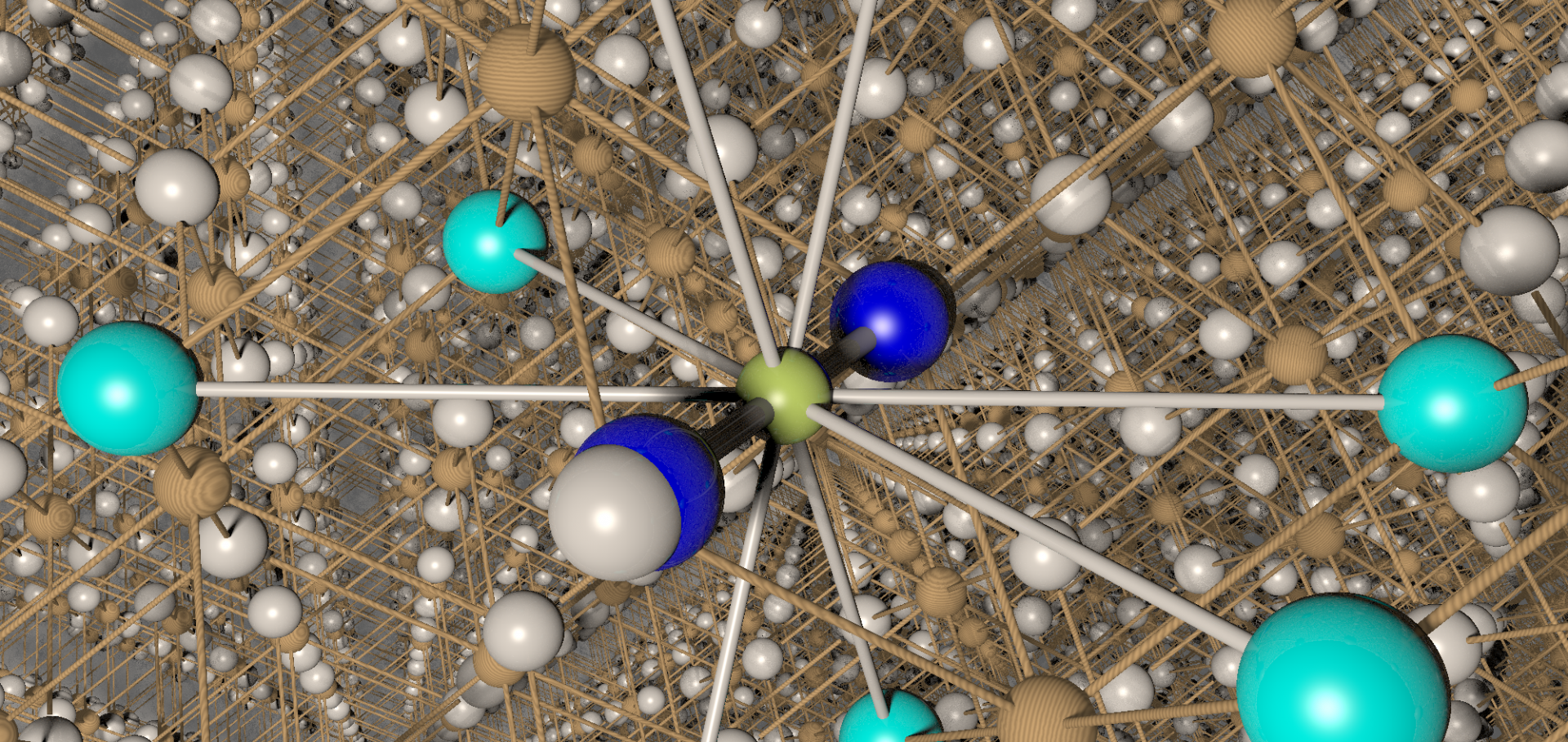Angle-dependent magnetoresistance of the layered organic superconductor κ-(ET)2 Cu(NCS)2 : Simulation and experiment
Physical Review B - Condensed Matter and Materials Physics 69:17 (2004)
Abstract:
The angle dependences of the magnetoresistance of two different isotopic substitutions (deuterated and undeuterated) of the layered organic superconductor κ-(ET)2Cu(NCS)2 are presented (where ET is the organic molecule bis(ethylenedithio)-tetrathiafulvalene). The angle-dependent magnetoresistance oscillations (AMRO) arising from the quasi-one-dimensional and quasi-two-dimensional Fermi surfaces in this material are easily confused. By using the Boltzmann transport equation extensive simulations of the AMRO are made that reveal the subtle differences between the different species of oscillation. No significant differences are observed in the electronic parameters derived from quantum oscillations and AMRO for the two isotopic substitutions. The interlayer transfer integrals are determined for both isotopic substitutions and a slight difference is observed which may account for the negative isotope effect previously reported. The success of the semiclassical simulations suggests that non-Fermi liquid effects are not required to explain the interlayer transport in this system.Landau levels, molecular orbitals, and the Hofstadter butterfly in finite systems
American Journal of Physics 72:5 (2004) 613-618
Abstract:
The Hofstadter butterfly is the energy spectrum of an infinite square lattice, plotted as a function of the magnetic field. We illustrate a method of calculating similar spectra for finite lattices in a magnetic field, using methods that consider the appropriate molecular orbitals, and find that the spectra resemble the Hofstadter butterfly. We relate the bonding and antibonding orbitals used to describe small systems to the Landau levels of the infinite system. This approach provides an unusual, but instructive, method of introducing the physics of Landau levels from the basic quantum mechanics of small systems. © 2004 American Association of Physics Teachers.Dynamic and static muon-spin relaxation observed above and below the spin-crossover in Fe(II) complexes
J PHYS IV 114 (2004) 601-605
Abstract:
The spin-crossover phenomenon is a cooperative low-spin (LS) to high-spin (HS) transition which can be initiated using temperature or light irradiation. We have used muon-spin relaxation (muSR) to study this transition in two salts which show this effect. muSR provides local magnetic information and hence a means of examining this transition from a local perspective. For both salts, the LS phase gives rise to root-exponential relaxation which we associate with a dilute distribution of fluctuating moments resulting from incomplete spin crossover. The low temperature HS fraction which remains is small but can be altered by rapid cooling. We relate the observed muon relaxation to the underlying fluctuating moment distribution and compare our results to Monte-Carlo simulations of these distributions.Electrodynamics of molecular organic superconductors studied by mu SR
J PHYS IV 114 (2004) 367-369
Abstract:
The response of the superconducting charge carriers to an applied magnetic field has been probed in a number of organic superconductors using muSR. Systematic studies have been made of the in-plane superconducting penetration depth lambda in superconductors based on the ET and BETS molecules. These studies have revealed a strong correlation between lambda and T-c. This type of correlation was first noted in high T-c cuprates by Uemura et al who found a linear relation between T-c and lambda(-2). In the case of organic superconductors, however, we find that the overall con-elation is better described as T-c proportional to lambda(-3). Understanding this characteristic trend should provide some important clues about the nature of the superconductivity in the organic superconductors; several possible models are considered here for describing this behaviour. It is concluded that models in which the superconducting carrier concentration is tied to the nominal band filling are inconsistent with the observed scaling behaviour.Landau levels, electric dipole transitions, and the Hofstadter butterfly in finite systems
J PHYS IV 114 (2004) 283-284


